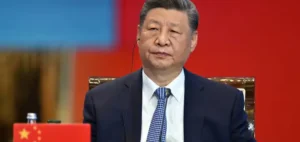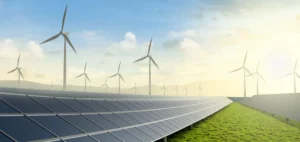For the first time since records began, the share of fossil fuels in South Korea’s electricity generation has fallen below the 50% mark, according to the latest data from the specialised think tank Ember. In April 2025, fossil fuels provided 49.5% of the national electricity supply, equivalent to 21.8 terawatt hours (TWh), marking a decrease compared to the previous record set in May 2024, at 50.4% (22.6 TWh). This notable decline is primarily explained by a decrease in coal-fired electricity generation, which fell to a historically low level of 18.5% of total electricity output (8.2 TWh). Previously, coal accounted for a significantly higher share of South Korea’s electricity mix, peaking at 30% for the full year of 2024.
Significant decrease in coal-generated electricity production
The decline in coal-generated electricity production is particularly marked in annual comparison: coal production in April 2025 was 36% lower than in April 2021. This decrease directly impacted emissions from the electricity sector, estimated at 6.7 million tonnes of carbon dioxide (CO₂) in April 2025, a reduction of 37% compared to levels recorded four years earlier. However, South Korea remains above the global average, with five tonnes of CO₂ per capita generated by the electricity sector in 2024—nearly three times the global average, according to Ember. National electricity demand, meanwhile, remained relatively stable at 44 TWh in April 2025, a slight increase of 1.4% compared to 43.4 TWh in April 2024.
Accelerated solar development and resurgence in nuclear power
The decline in fossil fuels in South Korea’s electricity mix coincides with a significant rise in photovoltaic solar generation. In April 2025, solar electricity production reached a record high of 9.2% (4 TWh) of the national electricity mix, an increase compared to the previous record of 8.7% set in May 2024. This growth is driven by a recent acceleration in new photovoltaic installations: between January and May 2025, 1.56 gigawatts (GW) were installed, 61% more than in the same period in 2024 (0.97 GW). This momentum breaks with two previous years of slowing photovoltaic capacity additions.
At the same time, nuclear electricity generation showed a substantial increase, representing 36.2% (15.9 TWh) of the electricity mix in April 2025, compared to 33.6% (14.6 TWh) in April 2024 and 31.1% (13.6 TWh) in April 2023. This progression mechanically increased downward pressure on fossil fuel sources in the electricity sector.
International positioning and future energy challenges
While the decline in fossil fuels in South Korea’s electricity mix aligns with an international trend, the country still lags behind in the large-scale deployment of certain renewable technologies, particularly wind power and battery storage. Solutions for Our Climate (SFOC), a South Korean organisation specialising in energy policy analysis, particularly highlights the need for Seoul to strengthen its renewable energy capacities to further reduce its dependence on imported fossil fuels. The central issue remains the pace of integration of these renewable technologies into an electricity system historically dominated by fossil fuels.






















